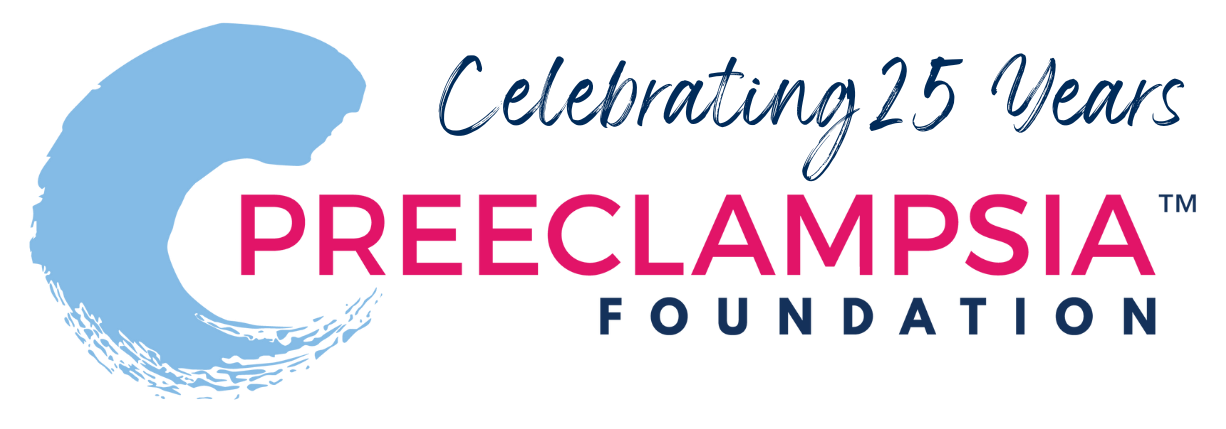
Last Updated on May 22, 2025
May is Preeclampsia Awareness Month, a month-long communication campaign to raise awareness of this life-threatening hypertensive disorder of pregnancy.
Our 2025 theme is "Ask Me About Preeclampsia."
Saying the word "preeclampsia" starts important conversations.
If you ask a stranger about the word "preeclampsia," they will have a story. Maybe it's their own story, or a loved one, like a mother, aunt, sister, or a friend.
If you ask an obstetric researcher or clinician about preeclampsia, they will speak at length about how strange it is that we still don't fully understand why preeclampsia and other hypertensive disorders occur in 5-8% of all pregnancies. They'll lament that we have few options besides a patient's medical and pregnancy history to help us predict what patients may be at risk for preeclampsia. They will tell you the stories of mothers and babies who went from healthy to life-threateningly sick in the matter of days.
This May, start the conversation by sharing the message to "Ask Me About Preeclampsia"... and tell others why you believe the Preeclampsia Foundation's work to drive research and healthcare practices is vital to saving lives.
Join us as the Preeclampsia Foundation celebrates its 25th year and raise your voice for preeclampsia awareness!
Social Media Hashtags
#PreAM25 #Preeclampsia
#AskMeAboutPreeclampsia #MyPreeclampsiaStory
Follow Us on Social Media
World Preeclampsia Day
May 22 is World Preeclampsia Day. Hear from global patient leaders on the preeclampsia journey of women in their countries.
Key Statistics About Preeclampsia to Share
-
Hypertensive disorders of pregnancy (HDPs) complicate 5-10% of all pregnancies worldwide. They include: preeclampsia (with or without severe features), eclampsia (seizures), HELLP syndrome (hemolysis, elevated liver enzymes, low platelets), and gestational hypertension.[i]
-
Preeclampsia is most often characterized by a rapid rise in blood pressure that can lead to seizure, stroke, multiple organ failure, and death of the mother and/or baby.
-
HDPs are a leading cause of maternal and infant death worldwide[ii], with the majority of these deaths happening in low- and middle-income countries (LMICs).
-
Approximately 76,000 women and 500,000 babies die each year worldwide.[iii]
-
The United States currently ranks 47th worldwide for maternal mortality, and is the only industrialized nation with a rising maternal mortality rate.[iv]
-
HDPs, including preeclampsia, are a leading cause of maternal and infant illness and death here in the United States.[v]
-
Black women experience severe maternal morbidity events at a rate 2.1 times greater than white women.[vi]
- 60% of hypertension-related maternal deaths are potentially preventable -- there continue to be missed opportunities for appropriate, recommended care of severe maternal hypertension.[xvii]
How do we improve outcomes for patients affected by preeclampsia?
-
Provide easy-to-understand preeclampsia signs and symptoms education tools to improve patient understanding of what to report to their healthcare providers.[xiv]
-
Screen for risk factors and consider aspirin use during the first trimester, early hypertension control, nutrition, and exercise, which may all help to decrease rates of preeclampsia.[vii],[viii],[ix],[x]
-
Standardize and deploy care guideline "bundles" on the leading causes of maternal mortality, including hypertensive disorders of pregnancy, which have been shown to decrease maternal illness and death.[xi], [xv]
-
Support perinatal quality collaboratives that help hospitals to implement care practices that reduce early delivery and reduce severe pregnancy complications.[xii]
-
Provide access to midwives, doulas, and other trained childbirth attendants throughout the prenatal period, labor and delivery, and the postpartum period, which can improve pregnancy outcomes for all moms, but especially those in the BIPOC community.[xiii]
-
Encourage and instruct prenatal and postpartum patients on self-measured blood pressure (SMBP) protocols. Pregnancy is an ideal time for women to "Check, Know, and Share" their blood pressure readings. [xvi]
What are the colors for preeclampsia awareness and HELLP syndrome awareness?
The colors for preeclampsia awareness are navy and hot pink. These colors were chosen by the community of preeclampsia, HELLP syndrome, and eclampsia survivors to connect with the light blue and light pink that is typically used for Pregnancy and Infant Loss Awareness. The motto often used with preeclampsia awareness is the phrase "delivering hope" to suggest that families affected by preeclampsia share their stories together to help the next family who may be affected by hypertensive disorders of pregnancy. Here are a few versions of preeclampsia awareness ribbons.
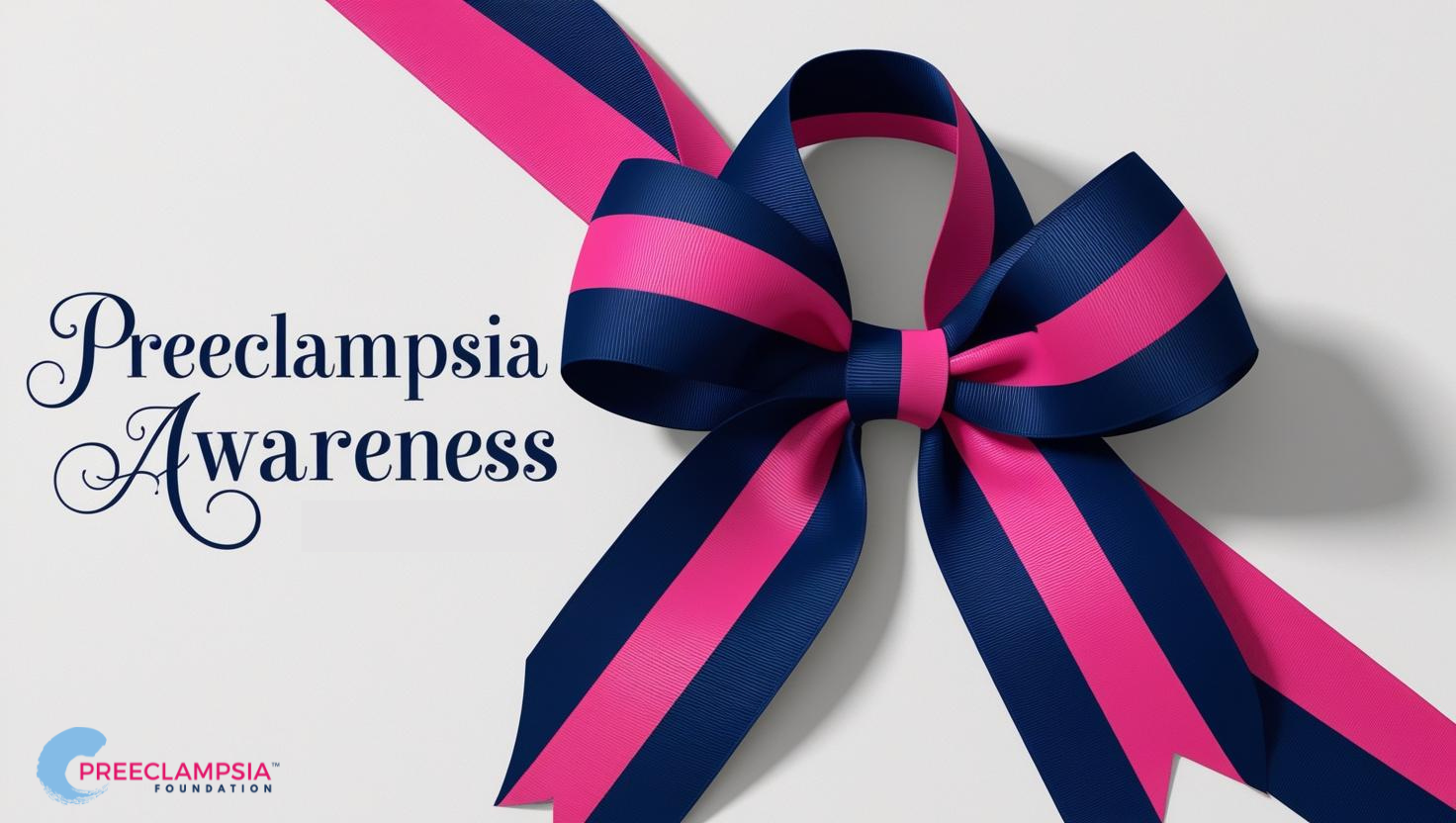
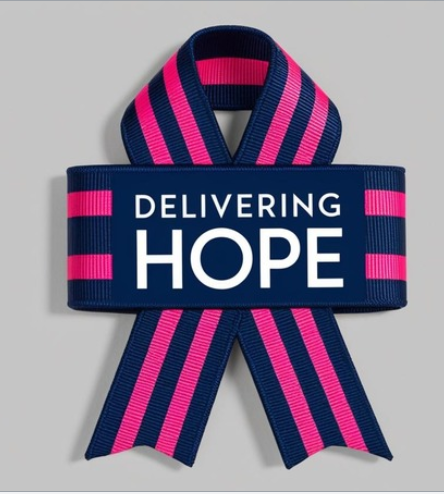

2025 Social Media Messages
Spreading awareness can be as simple as sending a message on social media - and be sure to tag us in your posts! Use our "31+ Days of Tweets" sheet to share out a fact-a-day about preeclampsia, or grab one of these suggestions below.
May is National Preeclampsia Awareness Month - that's why we partner with the Preeclampsia Foundation to kick off a month of ensuring that EVERY mother in any pregnancy knows the signs and symptoms of preeclampsia. Learn more at www.preeclampsia.org/AwarenessMonth and join the campaign by sharing this graphic! #PreeclampsiaAwarenessMonth
Know the symptoms of #preeclampsia: severe headache, swelling in the hands and face, visual issues, nausea and vomiting, stomach or abdomen pain, sudden weight gain, and/or shortness of breath. Preeclampsia can occur in any pregnancy, so ALL moms need to know. #PreeclampsiaAwarenessMonth
Postpartum preeclampsia can happen up to six weeks postpartum. It's important that women pay attention to specific postpartum symptoms, including severe headache, vision changes, swelling of the hands and face, and especially difficulty breathing. Help share this video to educate others on what they need to know: http://www.stillatrisk.org #PreeclampsiaAwarenessMonth
Preeclampsia rates are on the rise in the US and are a leading cause of maternal and infant illness and death. All women need to know the risk factors for developing high blood pressure during pregnancy - and that you can also have no risk factors, but still may develop it. Share this link: https://preeclampsia.org/aspirin #PreeclampsiaAwarenessMonth
#AskMeAboutPreeclampsia - because knowledge of signs and symptoms of high blood pressure during pregnancy can save a life. Learn more about how to participate at www.preeclampsia.org/AwarenessMonth #PreeclampsiaAwarenessMonth
2025 Social Media Graphics
Spreading awareness can be as simple as sharing a graphic on social media. More 2025 graphics coming soon!
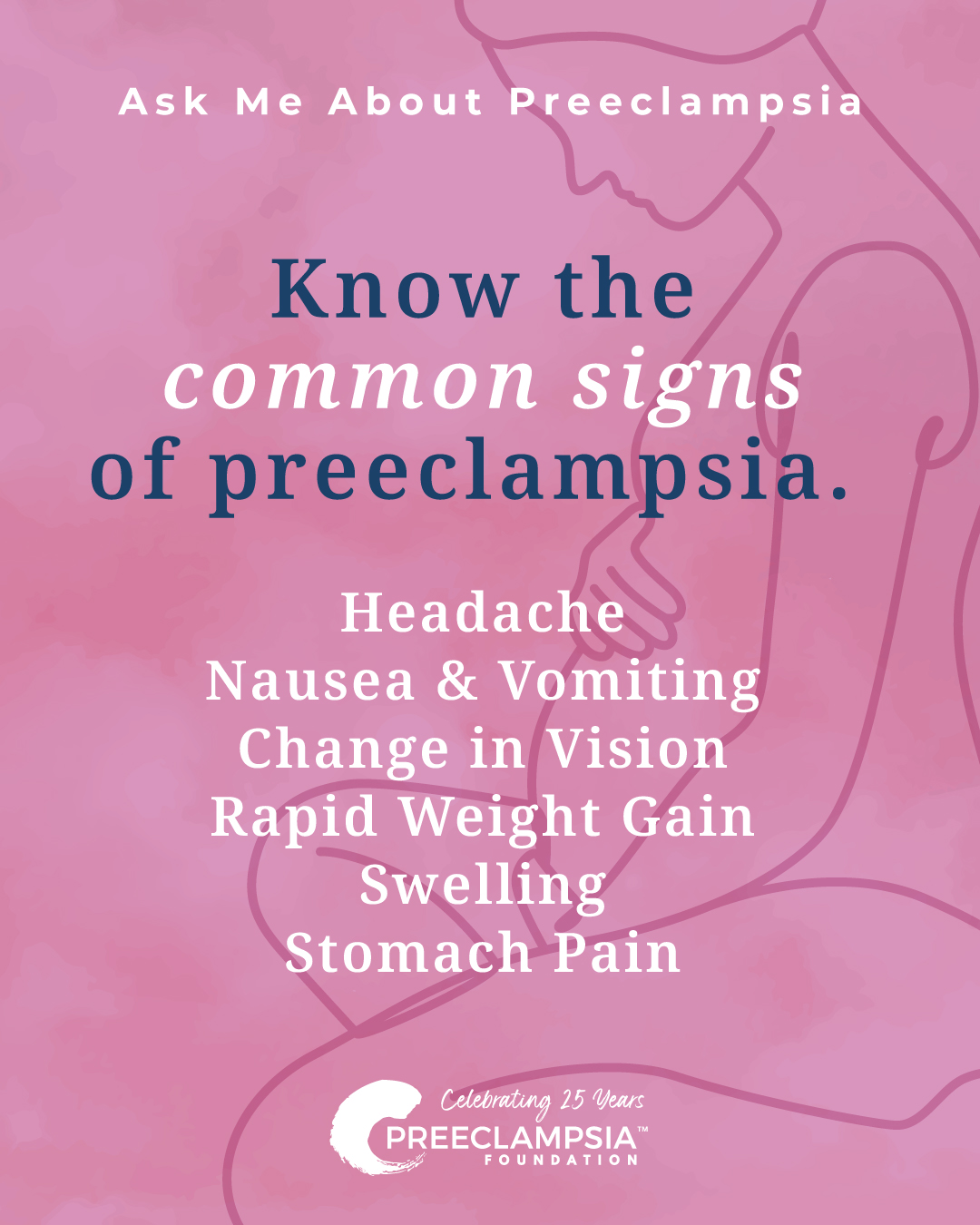
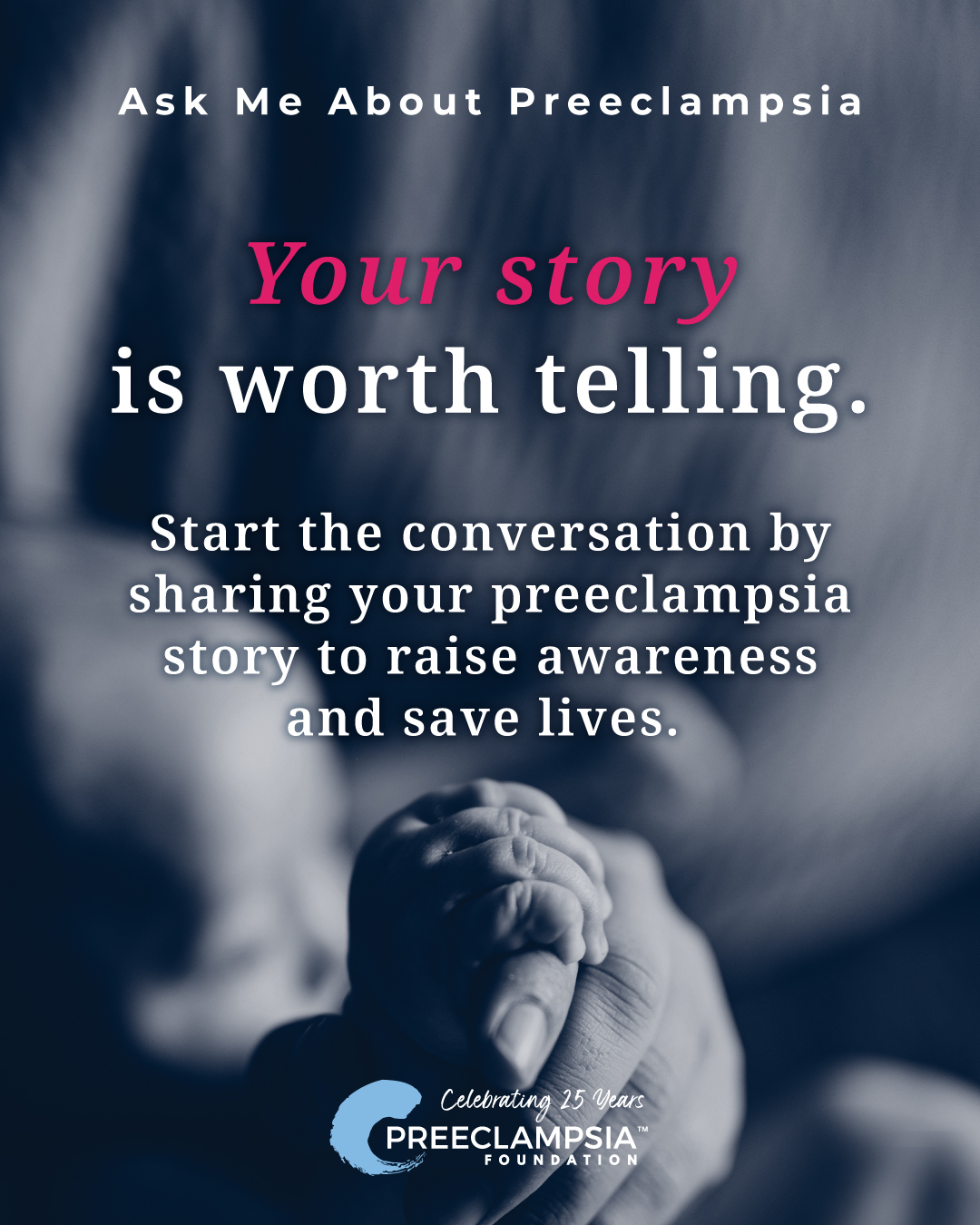
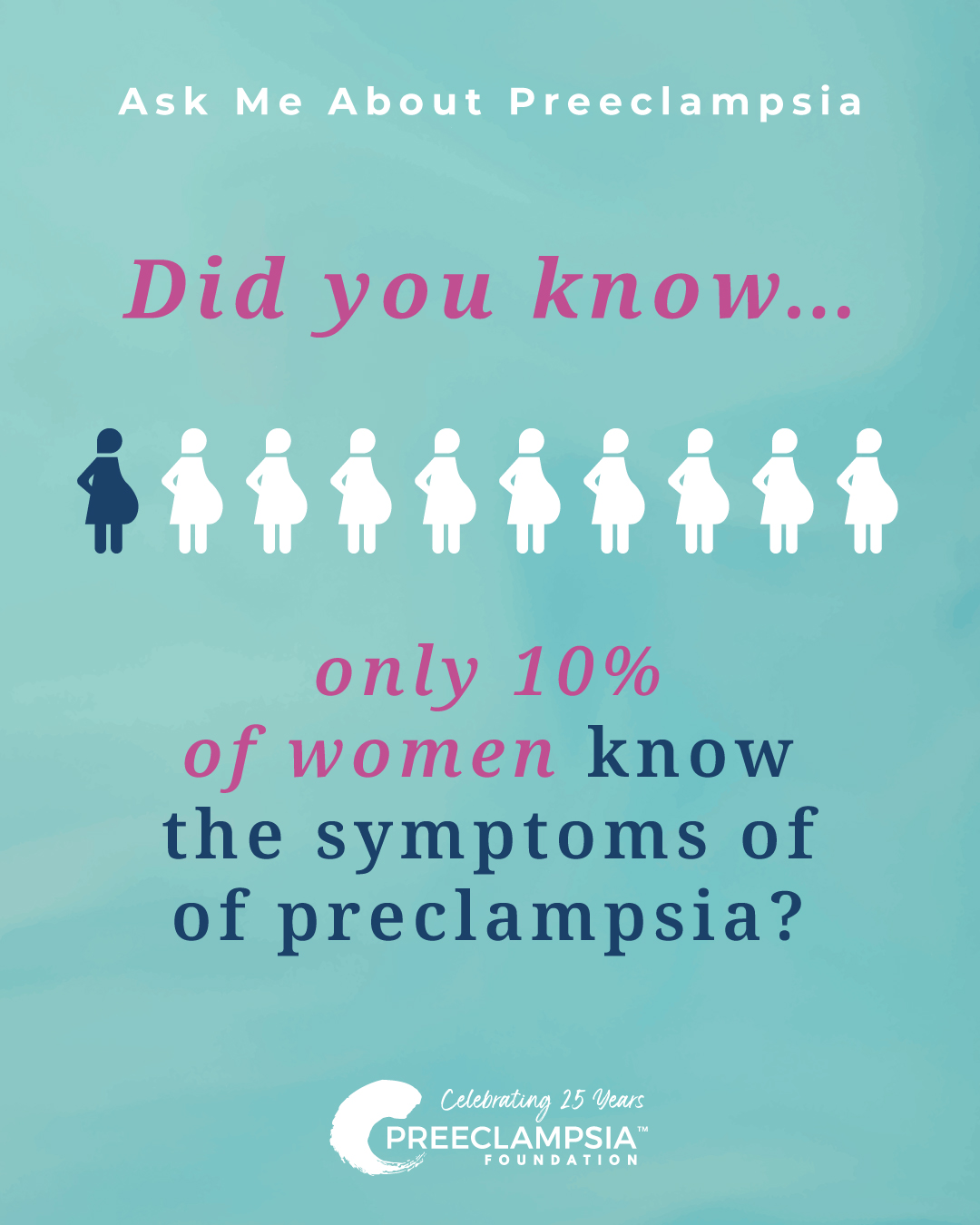
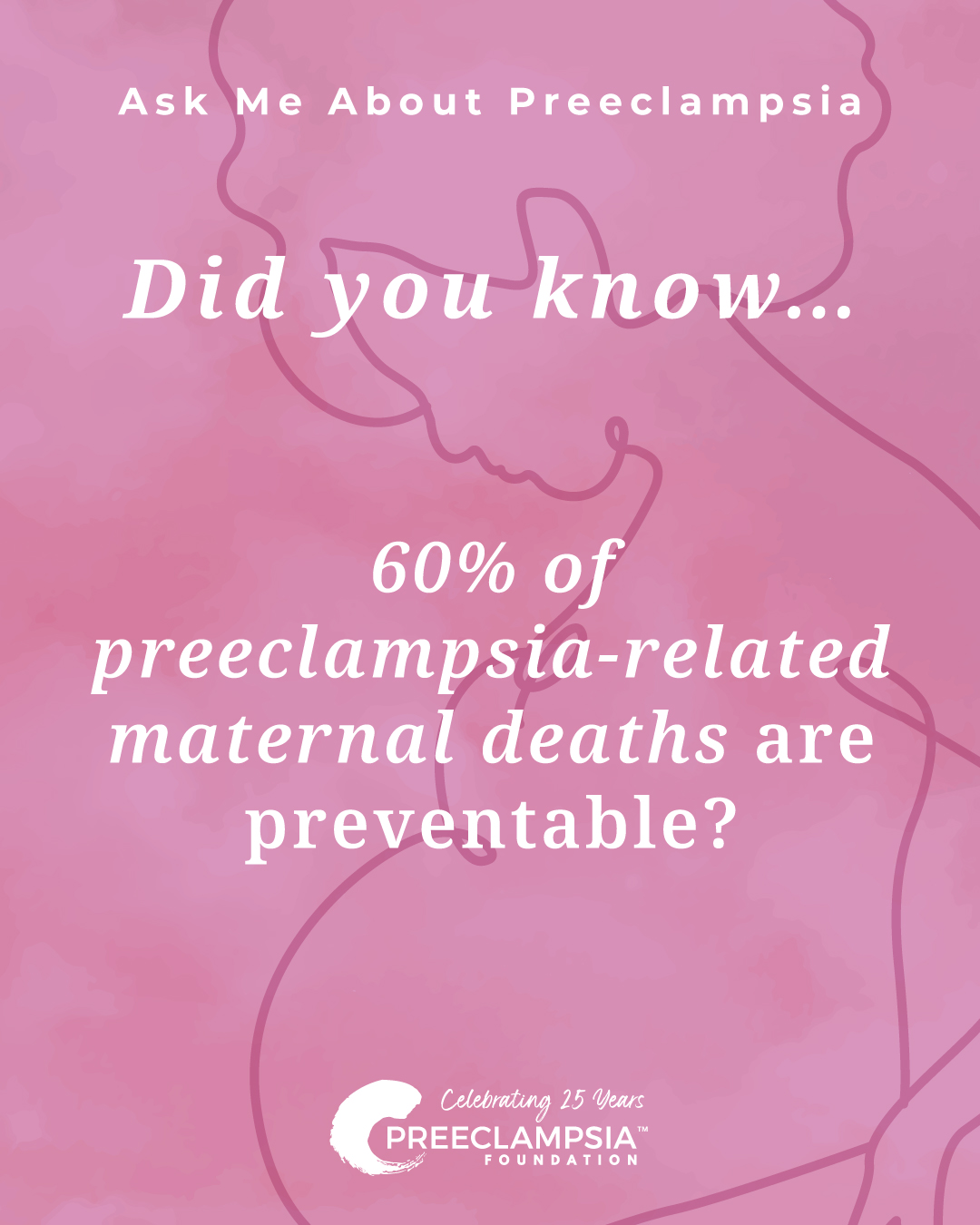
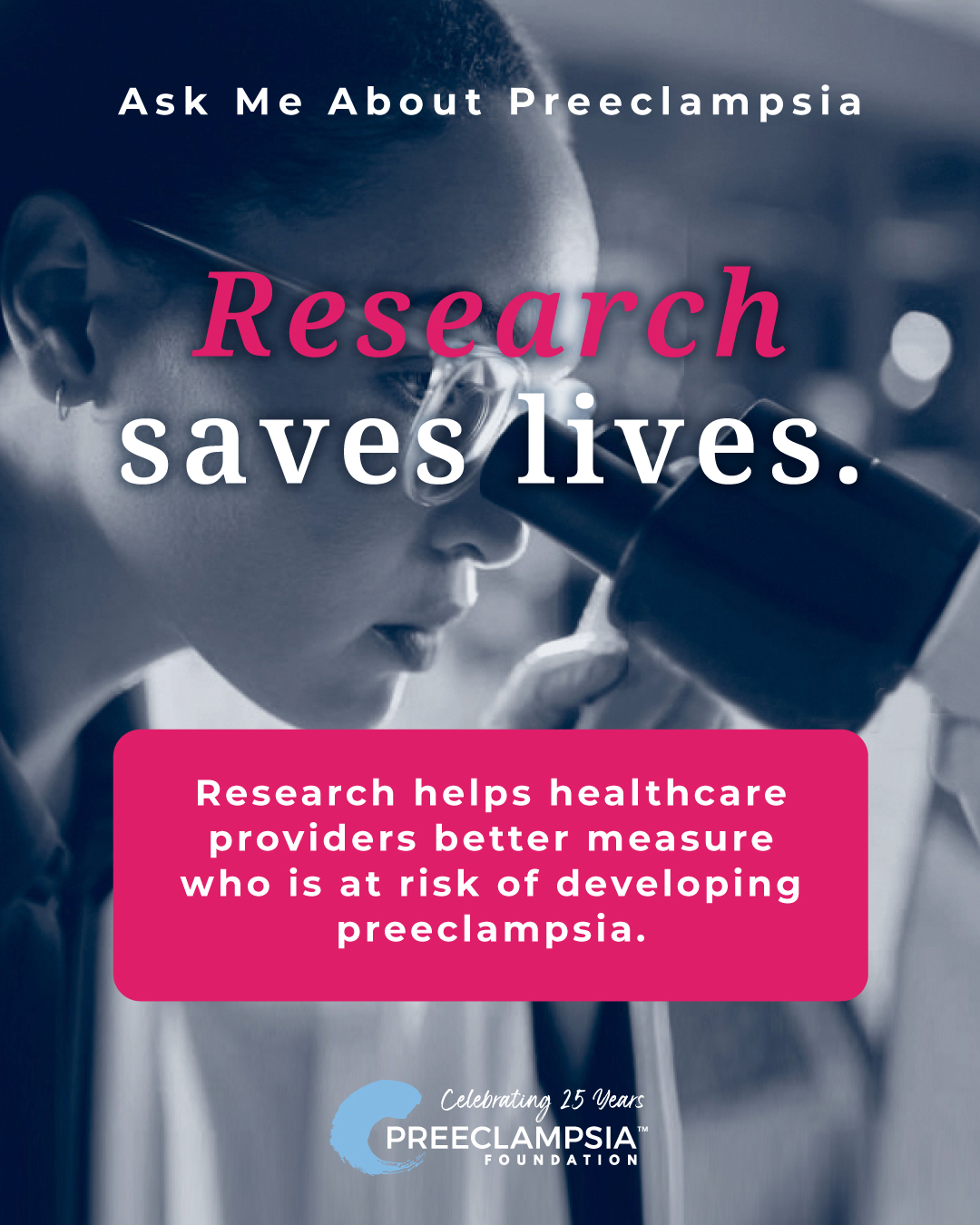
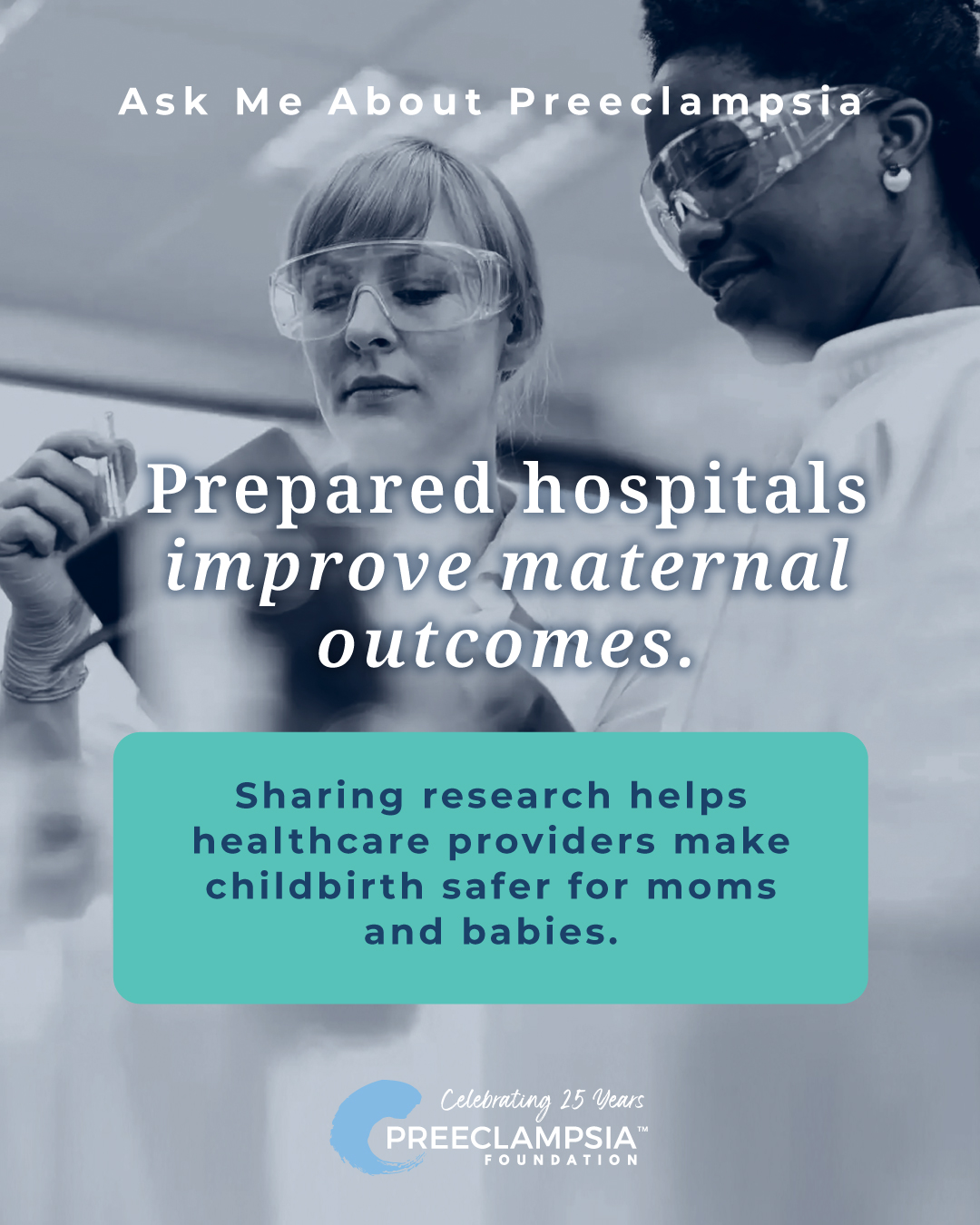
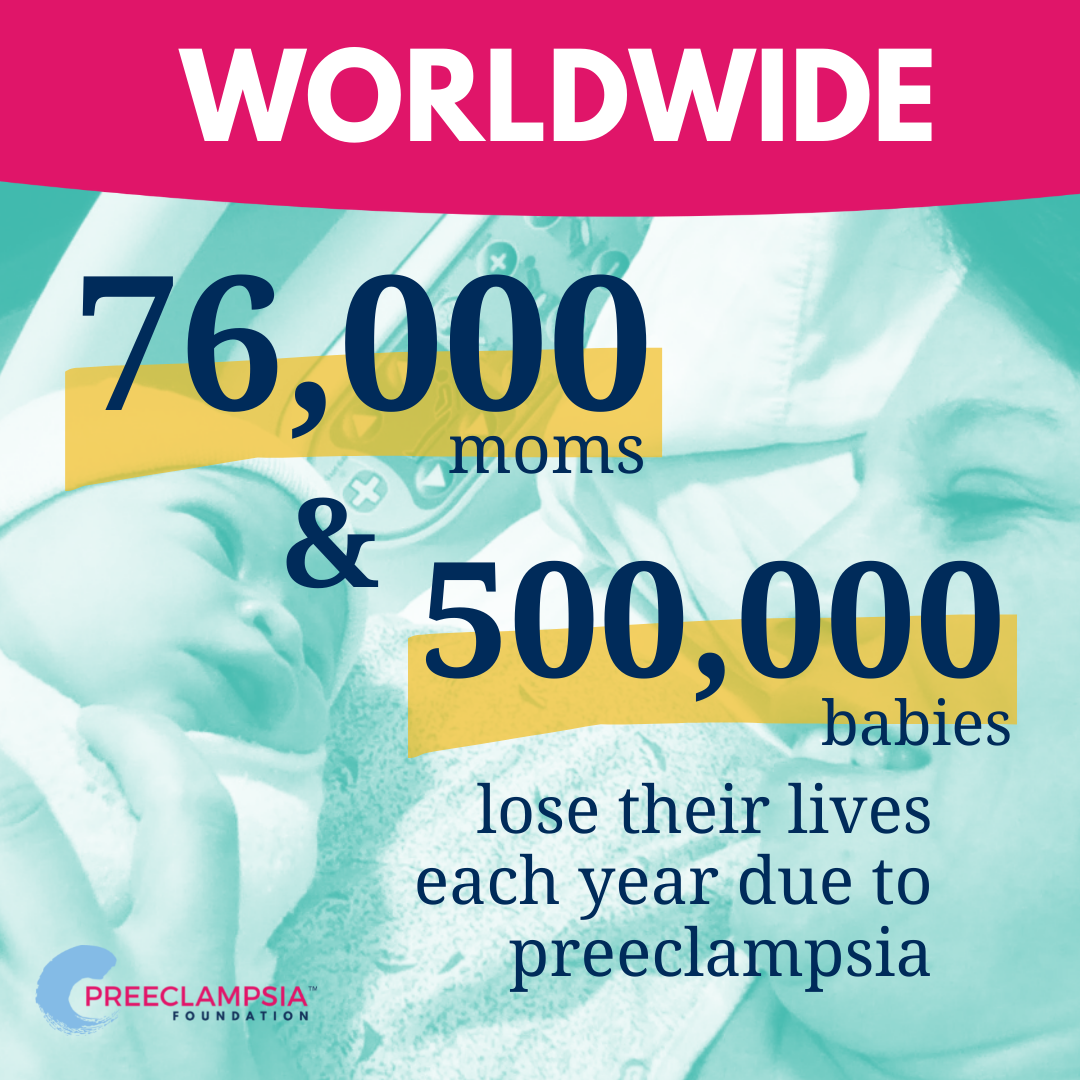
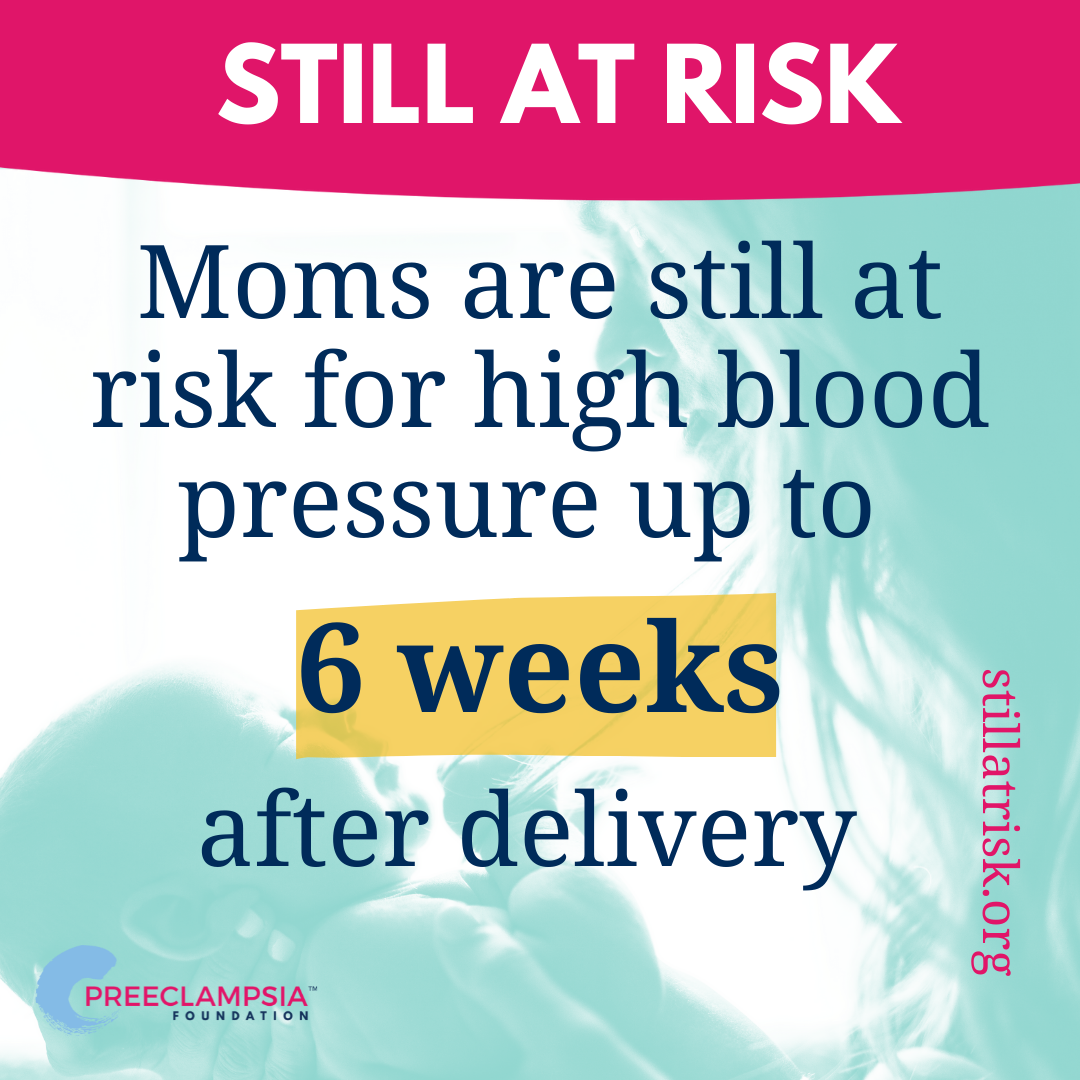

Educational Videos
We have a wide range of educational videos available to assist both community members and medical professionals alike.
7 Symptoms Every Pregnant Woman Should Know (tambien disponible en Español)
Aspirin may prevent or delay the onset of preeclampsia (tambien disponible en Español)
Postpartum Preeclampsia: Still At Risk (tambien disponible en Español)
[i] Ye, C., Ruan, Y., Zou, L., Li, G., Li, C., Chen, Y., … Zhang, W. (2014). The 2011 Survey on Hypertensive Disorders of Pregnancy (HDP) in China: Prevalence, Risk Factors, Complications, Pregnancy and Perinatal Outcomes. PLoS ONE, 9(6), e100180. http://doi.org/10.1371/journal.pone.0100180
[ii] Khan KS, Wojdyla D, Say L, Gulmezoglu M, Van Look PF. WHO analysis of causes of maternal death: A systematic review. Lancet 2006; 367:1066-74.
[iii] Salam R. A., Das, J. K., Ali, A., Bhuamik, S., and Lassi, Z.S. (2015). Diagnosis and management of preeclampsia in community settings in low and middle-income countries. Journal of Family Med Prim Care, 4(4), 501–506. http://doi.org/10.4103/2249-4863.174265
[iv] MacDorman, M., Declercq, E., Cabral, H., Morton, C., “Is the United States Maternal Mortality Rate Increasing? Disentangling trends from measurement issues: Short title: U.S. Maternal Mortality Trends.” Journal of Obstetrics and Gynecology. September, 2016.
[v] Center for Disease Control Pregnancy Mortality Surveillance System: https://www.cdc.gov/reproductivehealth/maternal-mortality/pregnancy-mortality-surveillance-system.htm
[vi] Racial Disparities Persist in Maternal Morbidity, Mortality and Infant Health: https://www.ajmc.com/view/racial-disparities-persist-in-maternal-morbidity-mortality-and-infant-health
[vii] US Preventative Services Task Force, Low Dose Aspirin Use for the Prevention of Morbidity and Mortality from Preeclampsia: https://www.uspreventiveservicestaskforce.org/uspstf/recommendation/low-dose-aspirin-use-for-the-prevention-of-morbidity-and-mortality-from-preeclampsia-preventive-medication
[viii] Tita, A, et al, "Treatment for Mild Chronic Hypertension during Pregnancy" April 2022: https://www.nejm.org/doi/full/10.1056/NEJMoa2201295
[ix] Minhas, A; Hong, X; et al. "Mediterranean‐Style Diet and Risk of Preeclampsia by Race in the Boston Birth Cohort" Journal of the American Heart Association, April 2022: https://doi.org/10.1161/JAHA.121.022589
[x] Danielli M, Gillies C, Thomas RC, Melford SE, Baker PN, Yates T, Khunti K, Tan BK. Effects of Supervised Exercise on the Development of Hypertensive Disorders of Pregnancy: A Systematic Review and Meta-Analysis. J Clin Med. 2022 Feb 1;11(3):793. doi: 10.3390/jcm11030793. PMID: 35160245; PMCID: PMC8836524.
[xi] The Role of Patient Safety Bundles, Alliance for Innovation on Maternal Health: https://safehealthcareforeverywoman.org/aim/patient-safety-bundles/
[xii] Center for Disease Control, Perinatal Quality Collaboratives: https://www.cdc.gov/reproductivehealth/maternalinfanthealth/pqc.htm
[xiii] Hodnett ED, Gates S, Hofmeyr GJ, Sakala C. Continuous support for women during childbirth. Cochrane Database of Systematic Reviews 2013, Issue 7. Art. No.: CD003766. DOI: 10.1002/14651858.CD003766.pub5.
[xiv] You WB, Wolf MS, Bailey SC, Grobman WA. Improving patient understanding of preeclampsia: a randomized controlled trial. Am J Obstet Gynecol. 2012 May;206(5):431.e1-5. doi: 10.1016/j.ajog.2012.03.006. Epub 2012 Mar 13. PMID: 22542120.
[xv] Arora KS, Shields LE, Grobman WA, D'Alton ME, Lappen JR, Mercer BM. Triggers, bundles, protocols, and checklists--what every maternal care provider needs to know. Am J Obstet Gynecol. 2016 Apr;214(4):444-451. doi: 10.1016/j.ajog.2015.10.011. Epub 2015 Oct 23. PMID: 26478105.
[xvi] https://millionhearts.hhs.gov/about-million-hearts/optimizing-care/smbp.html
[xvii] Main EK, McCain CL, Morton CH, Holtby S, Lawton ES. Pregnancy-related mortality in California: causes, characteristics, and improvement opportunities. Obstet Gynecol. 2015;125(4):938-947.
Event listing coming soon!
